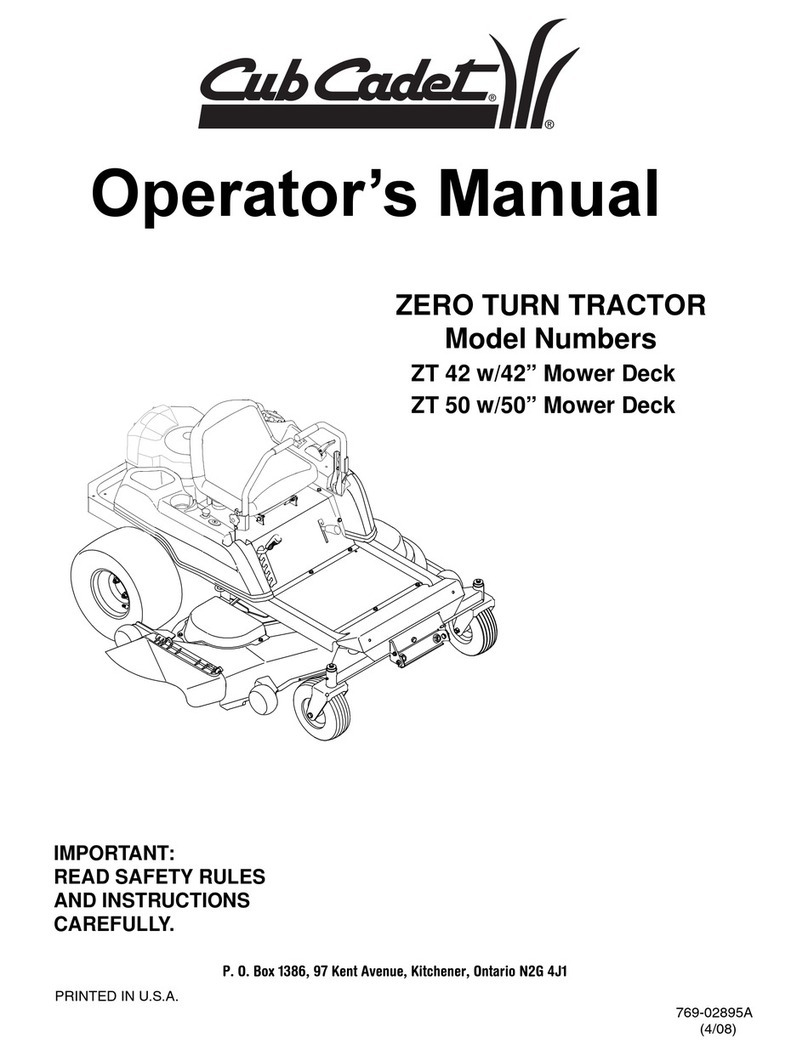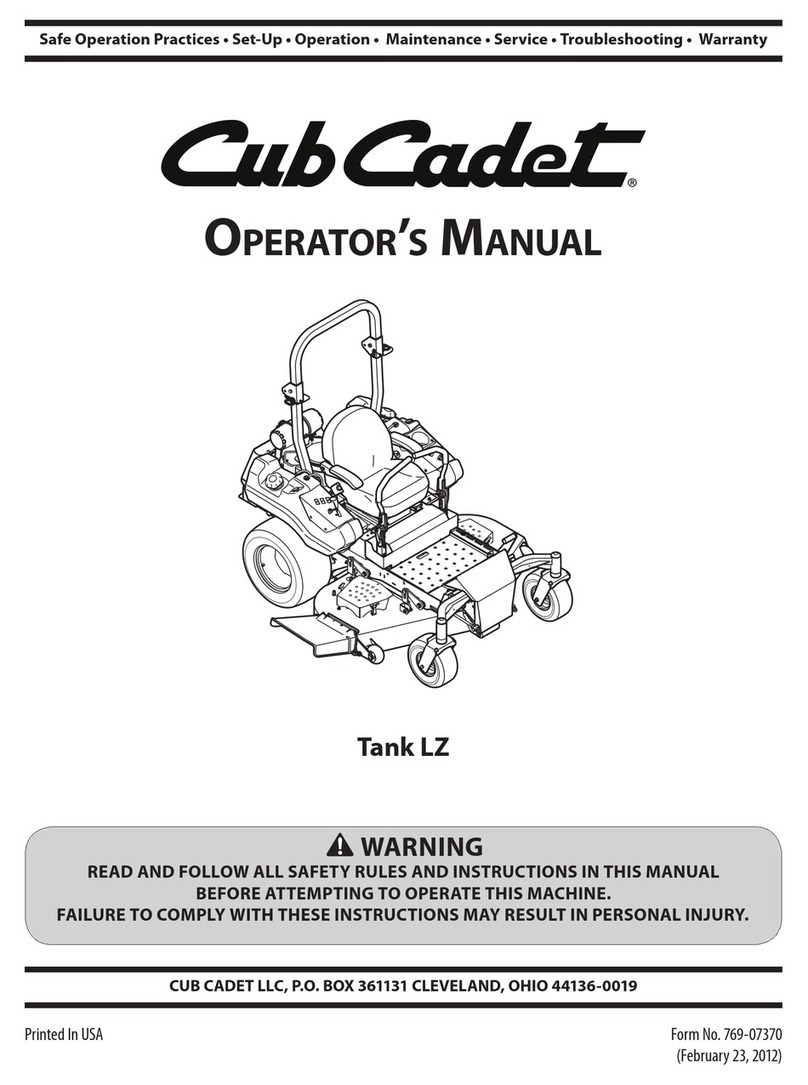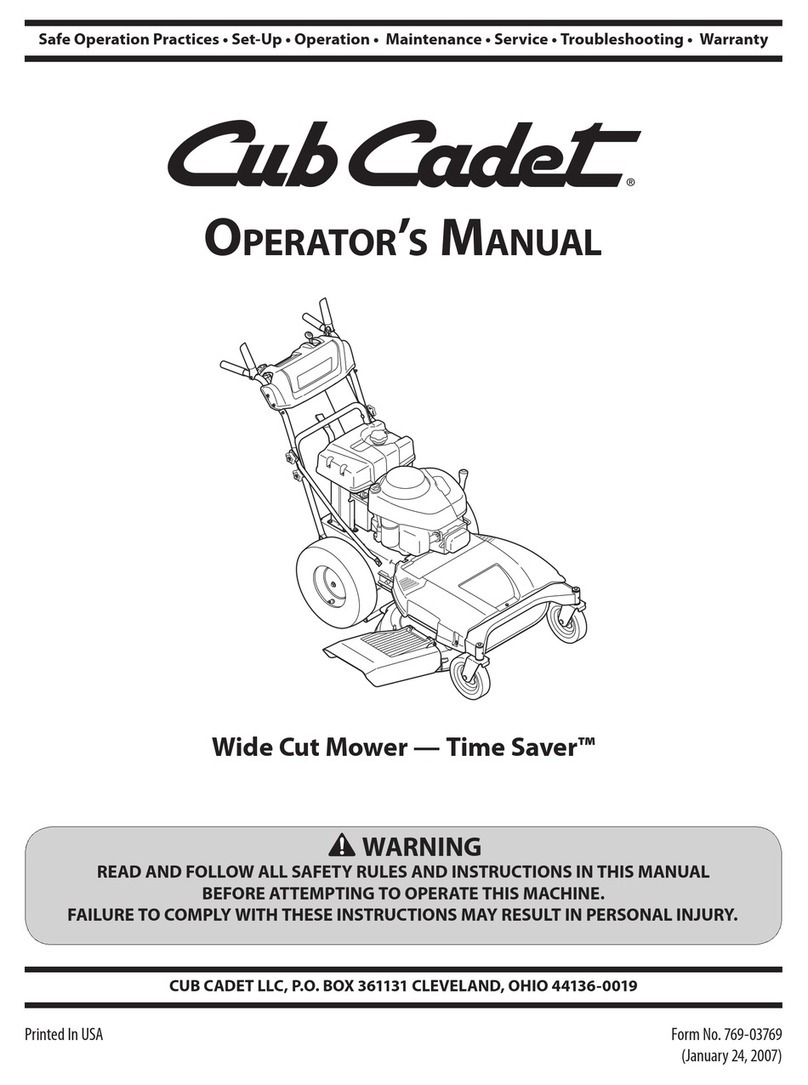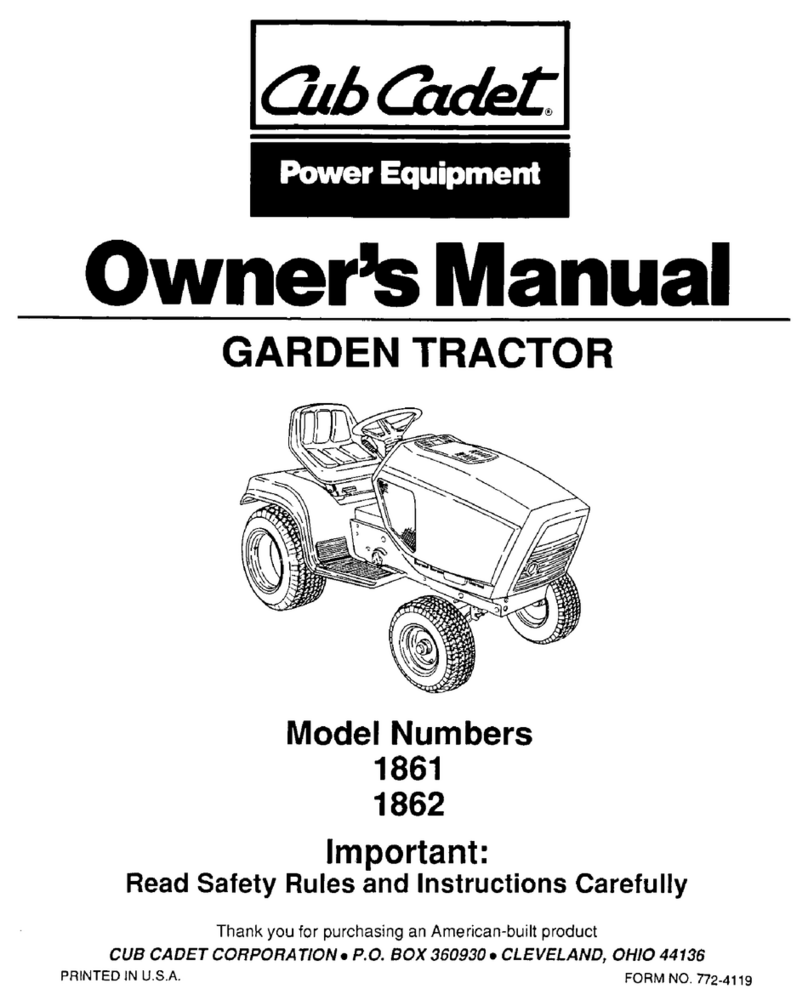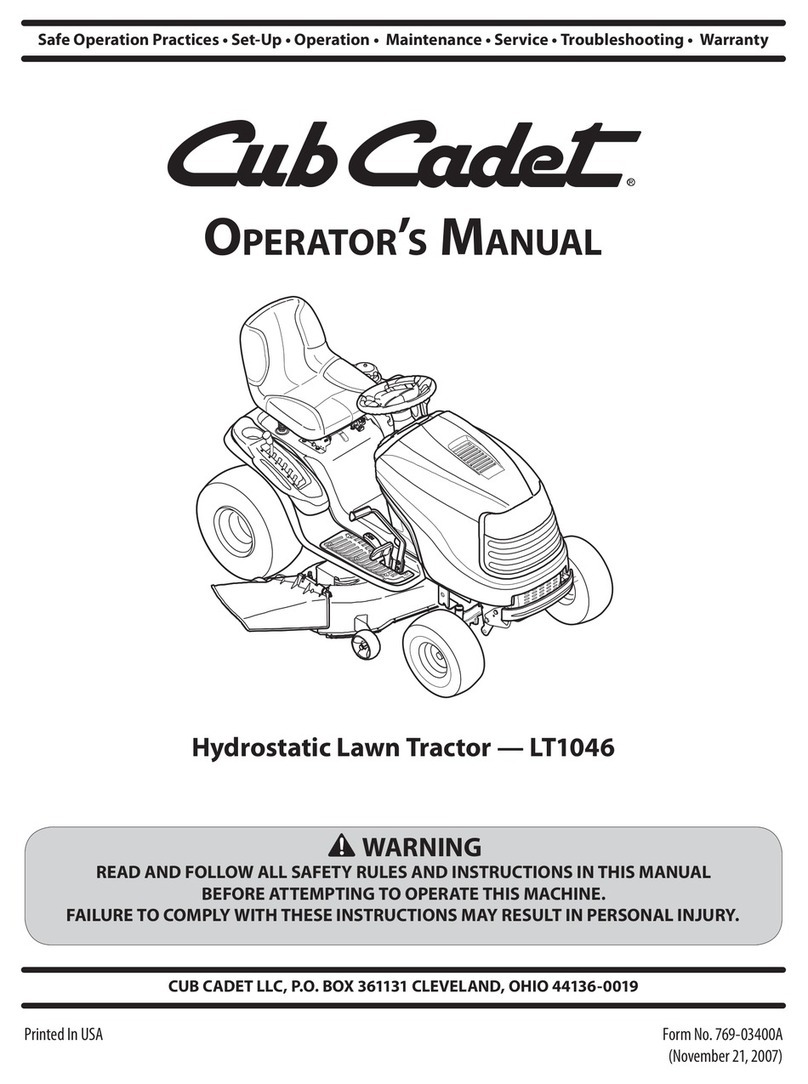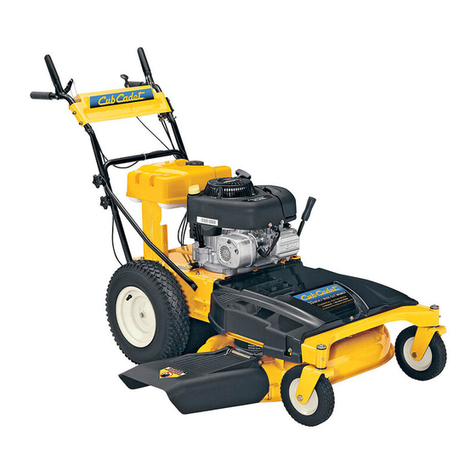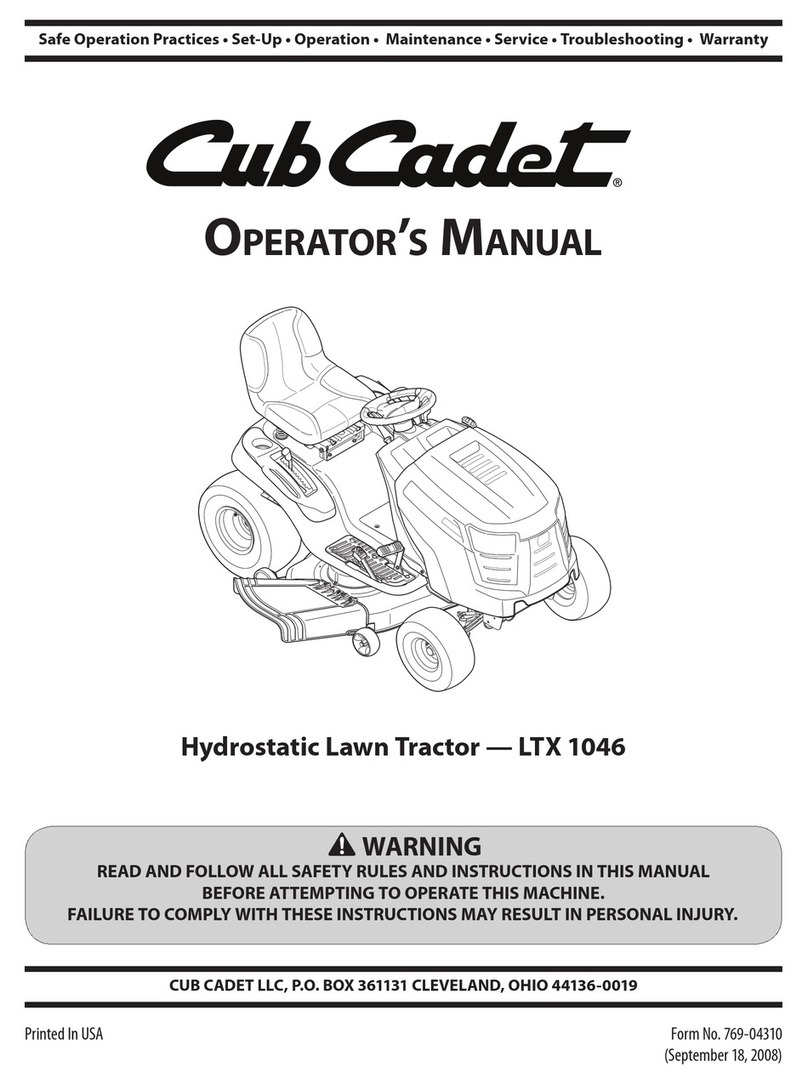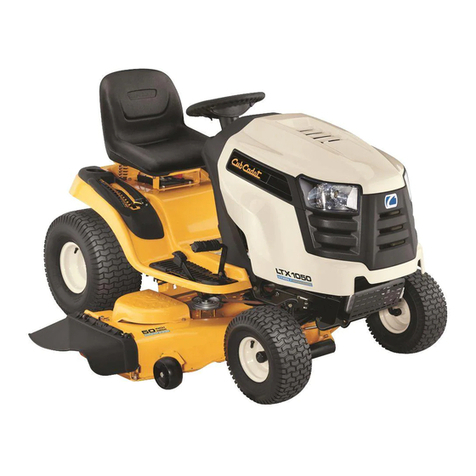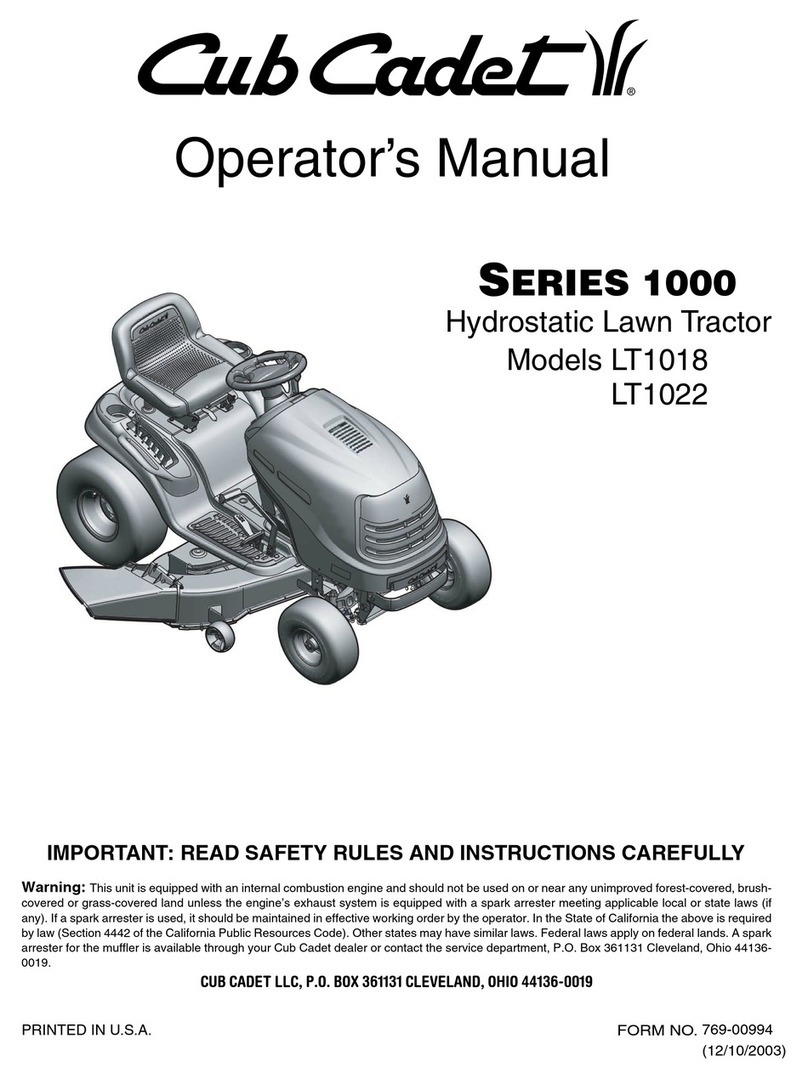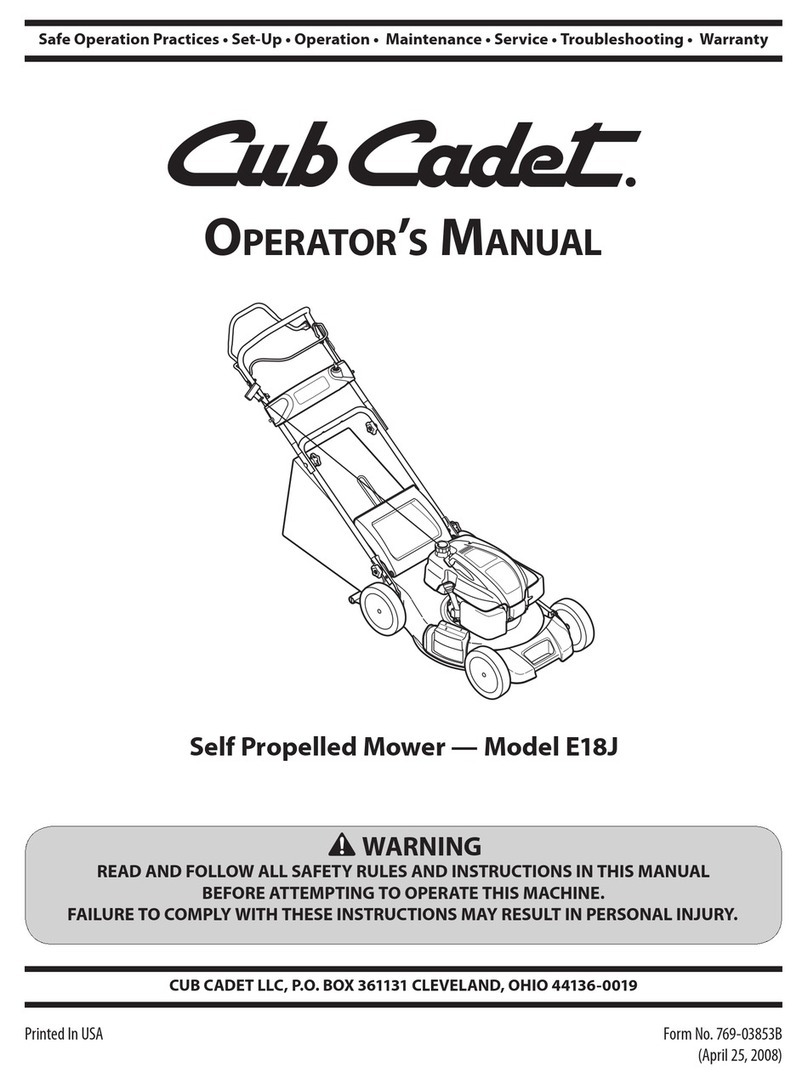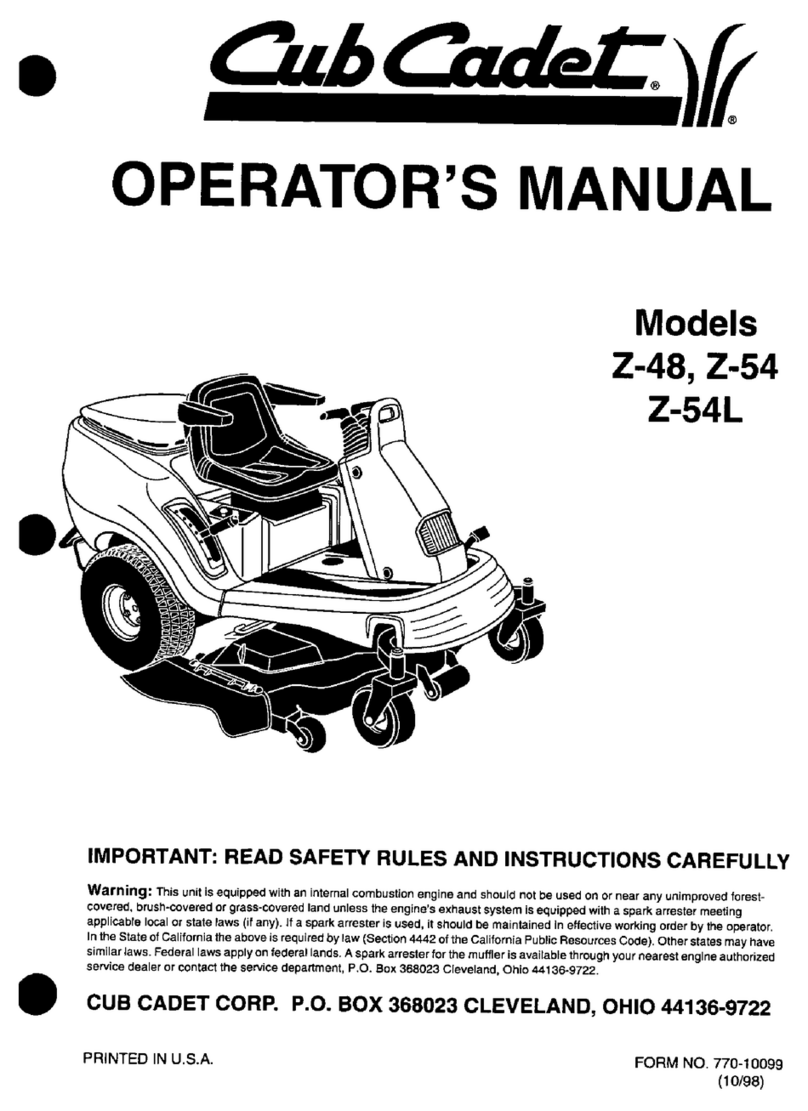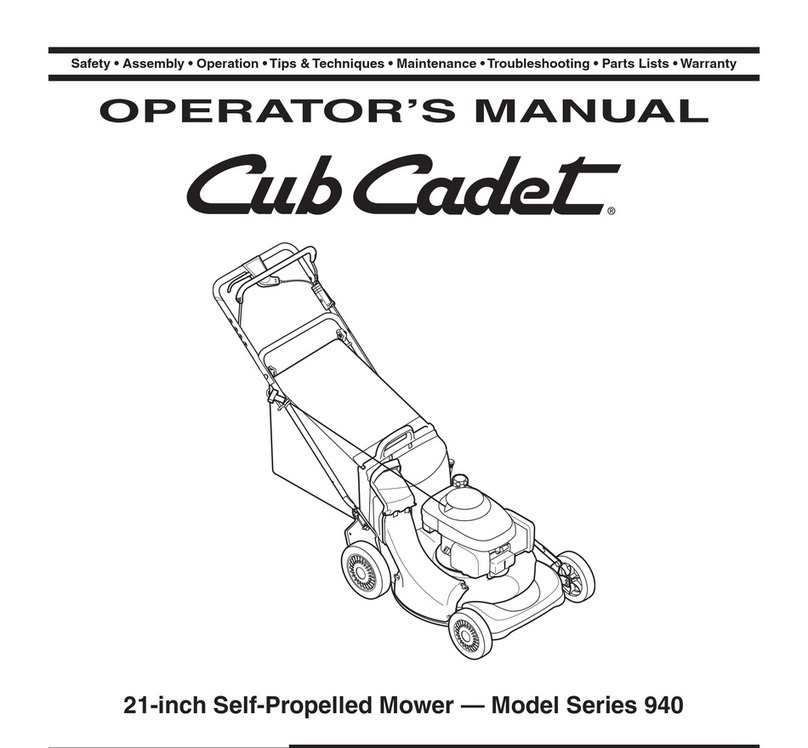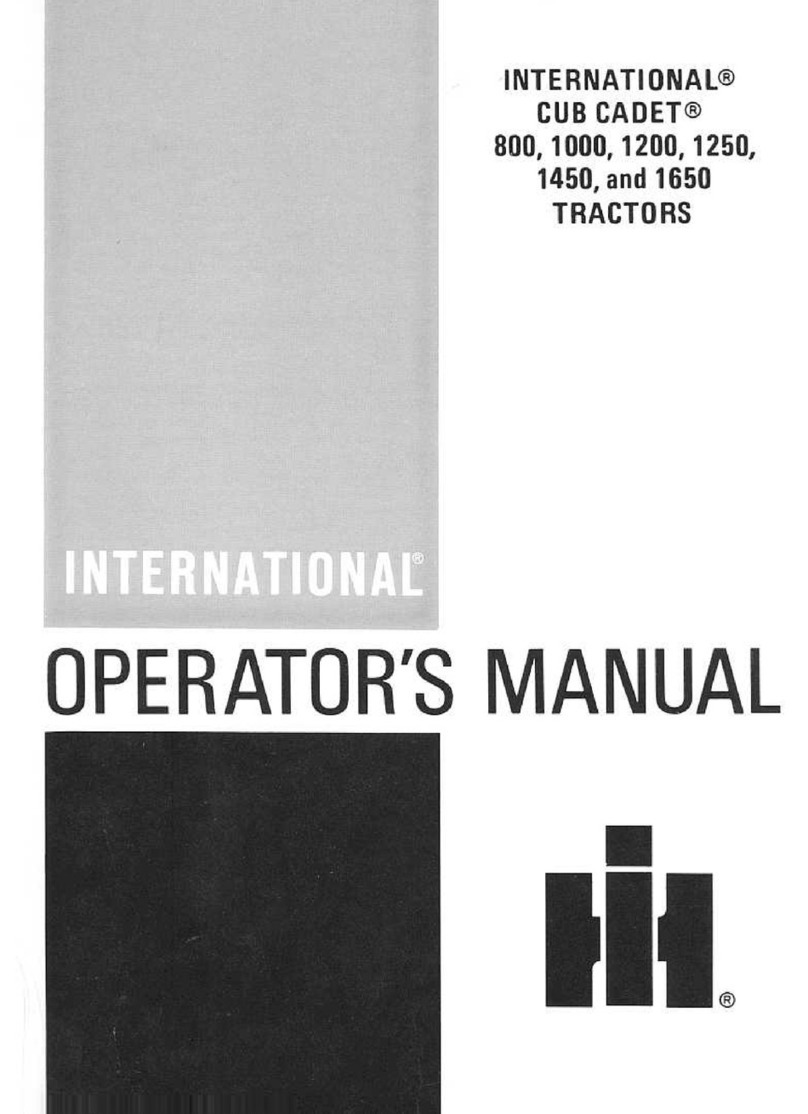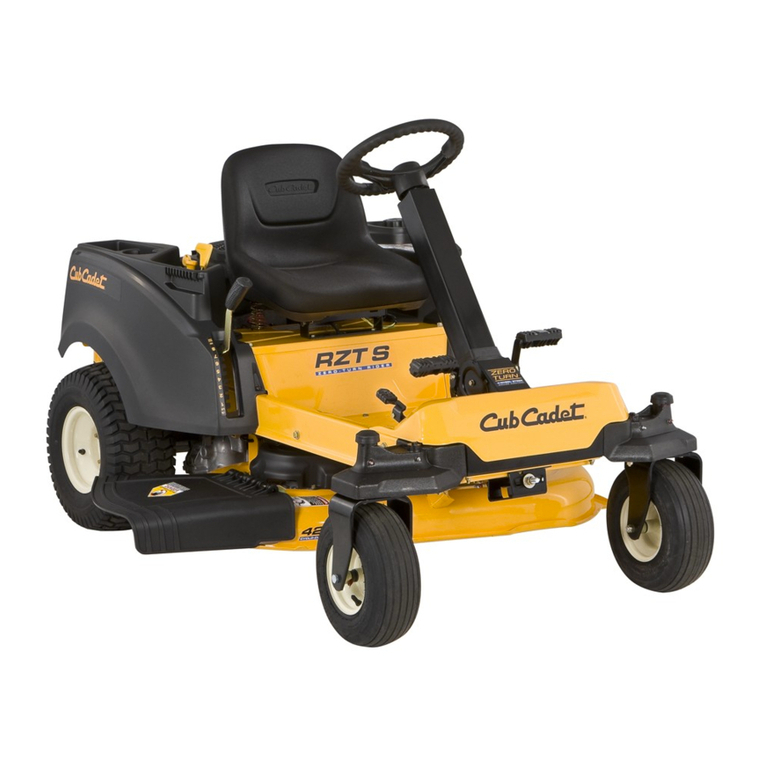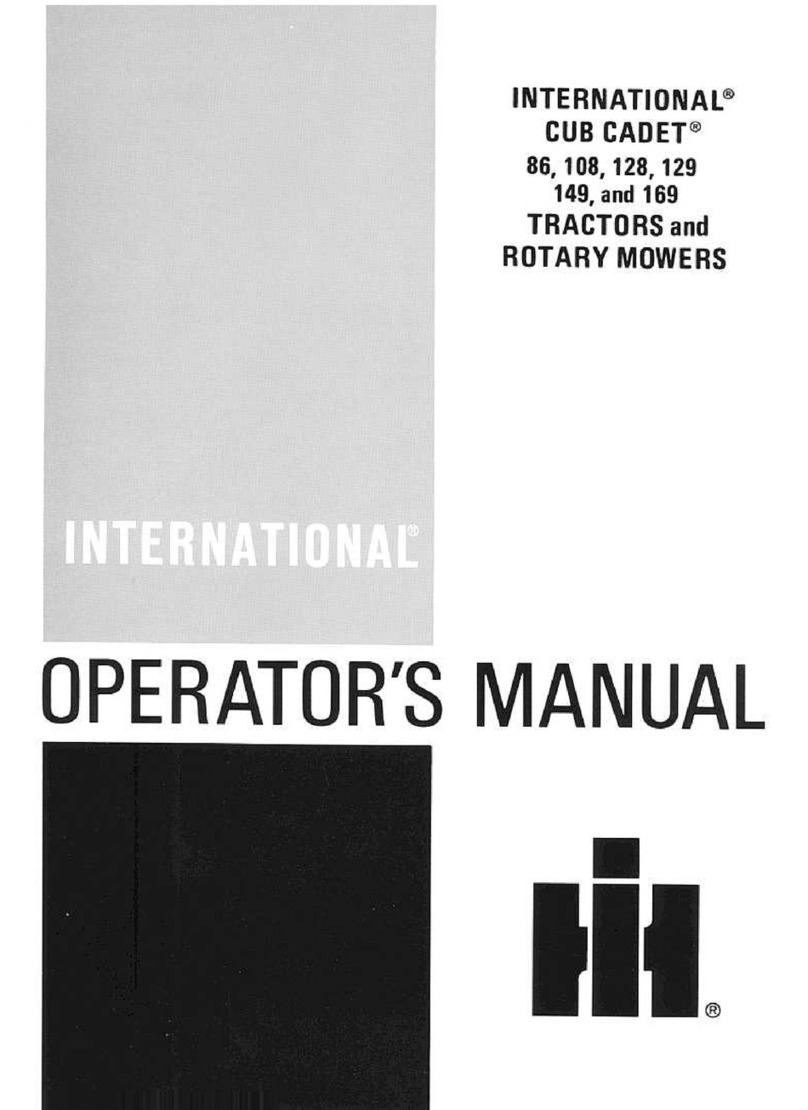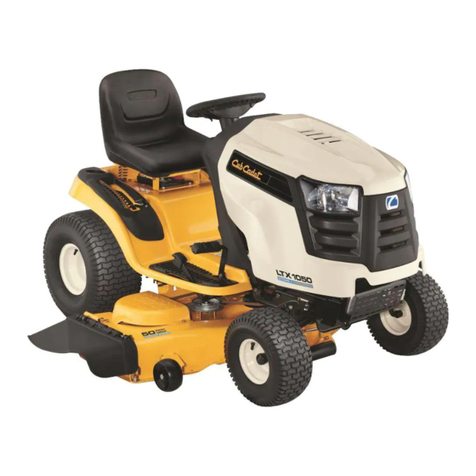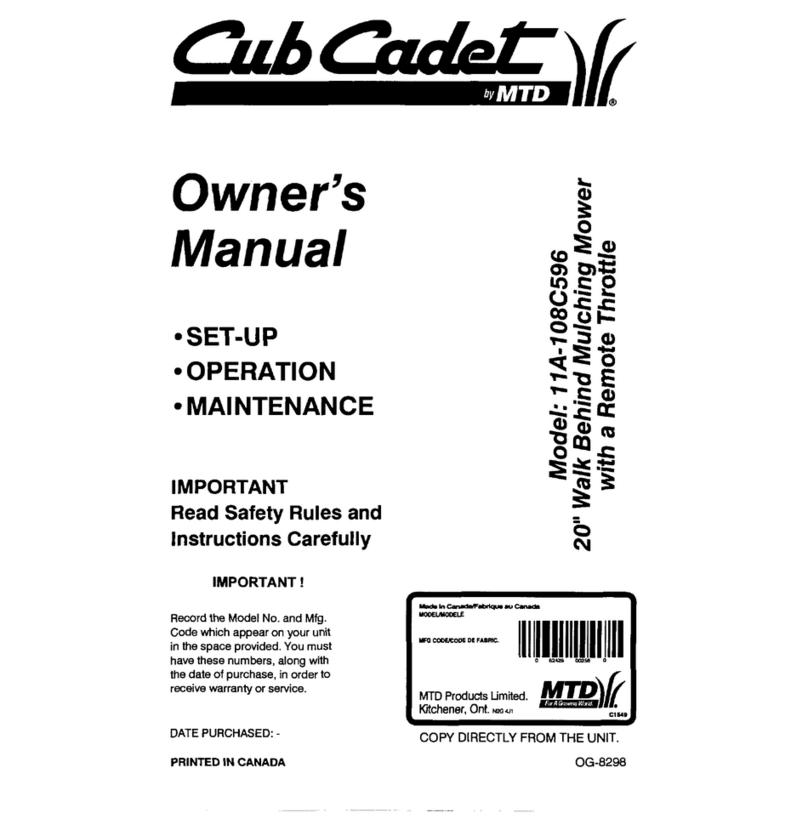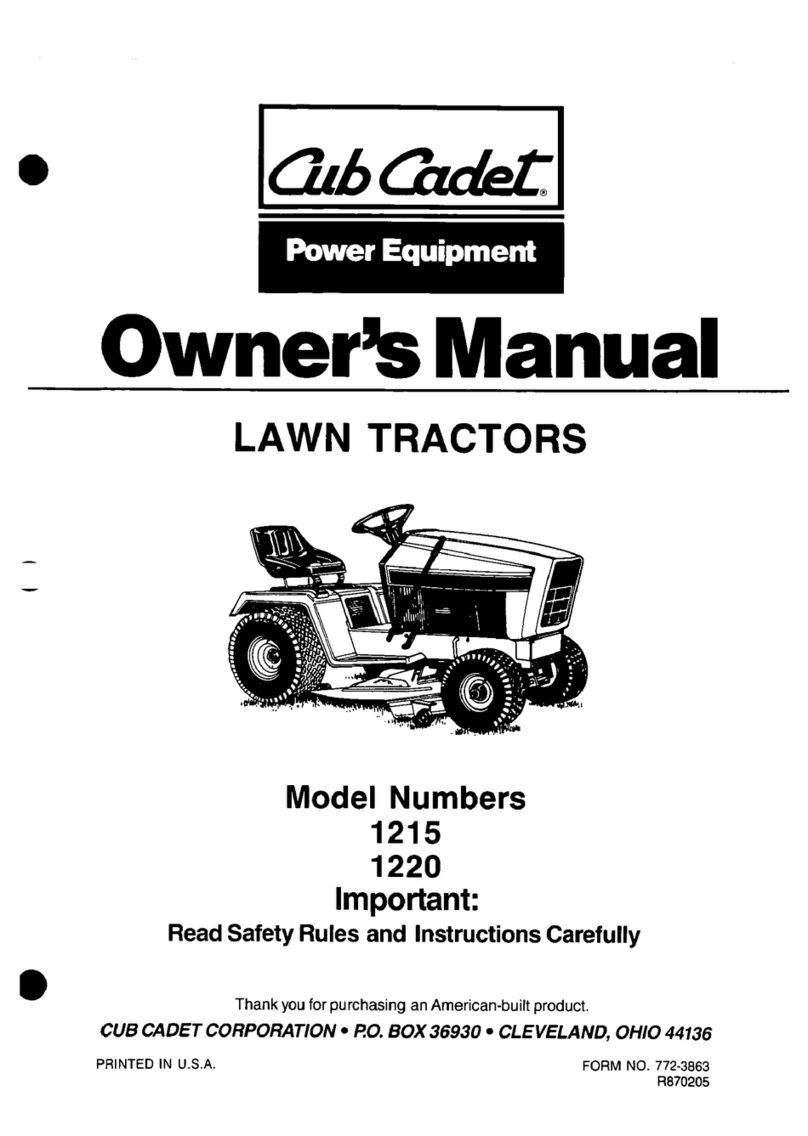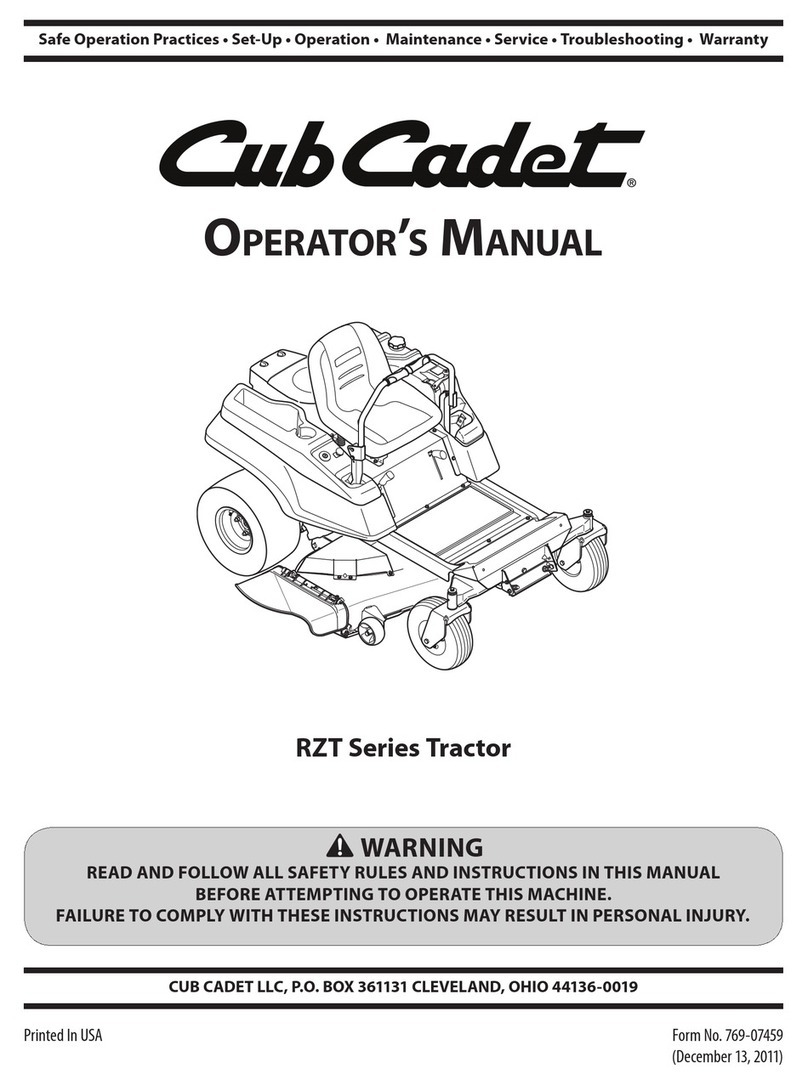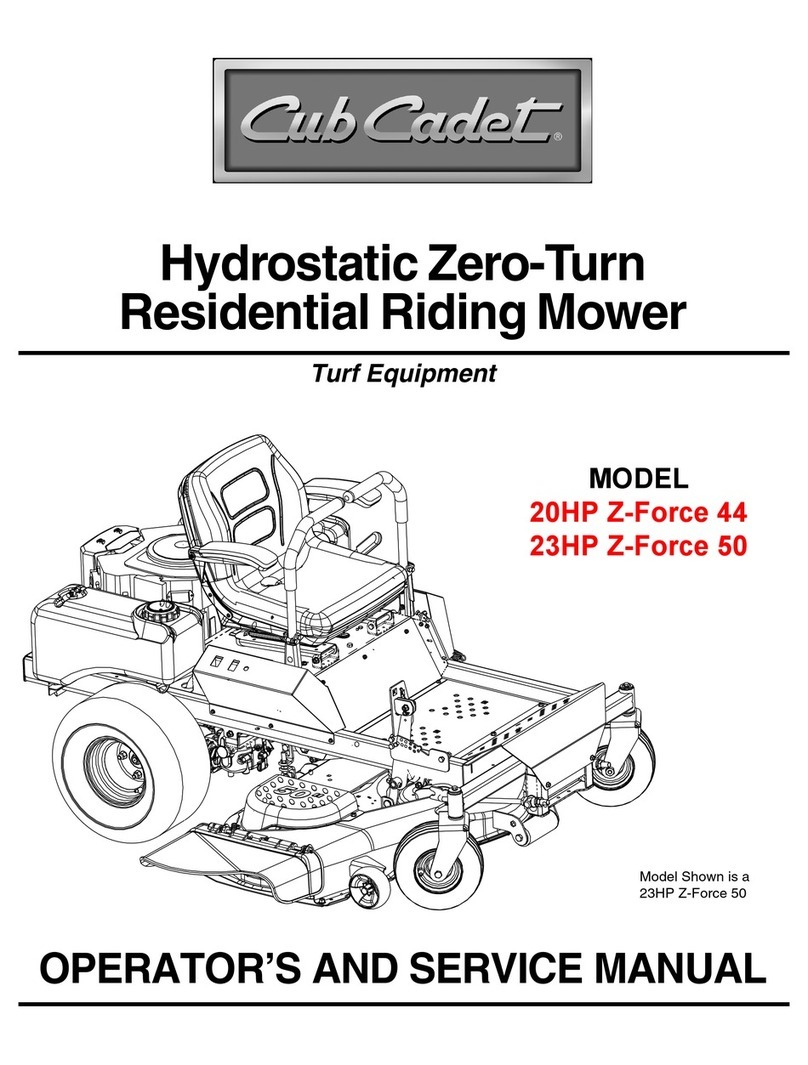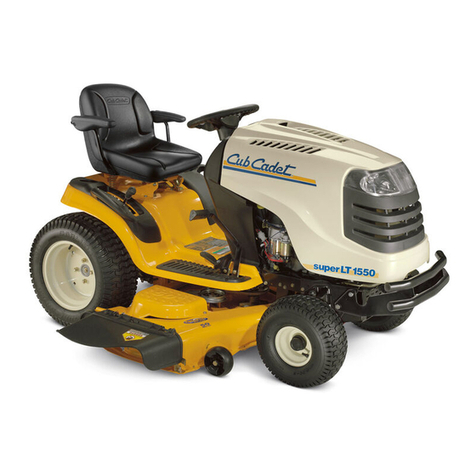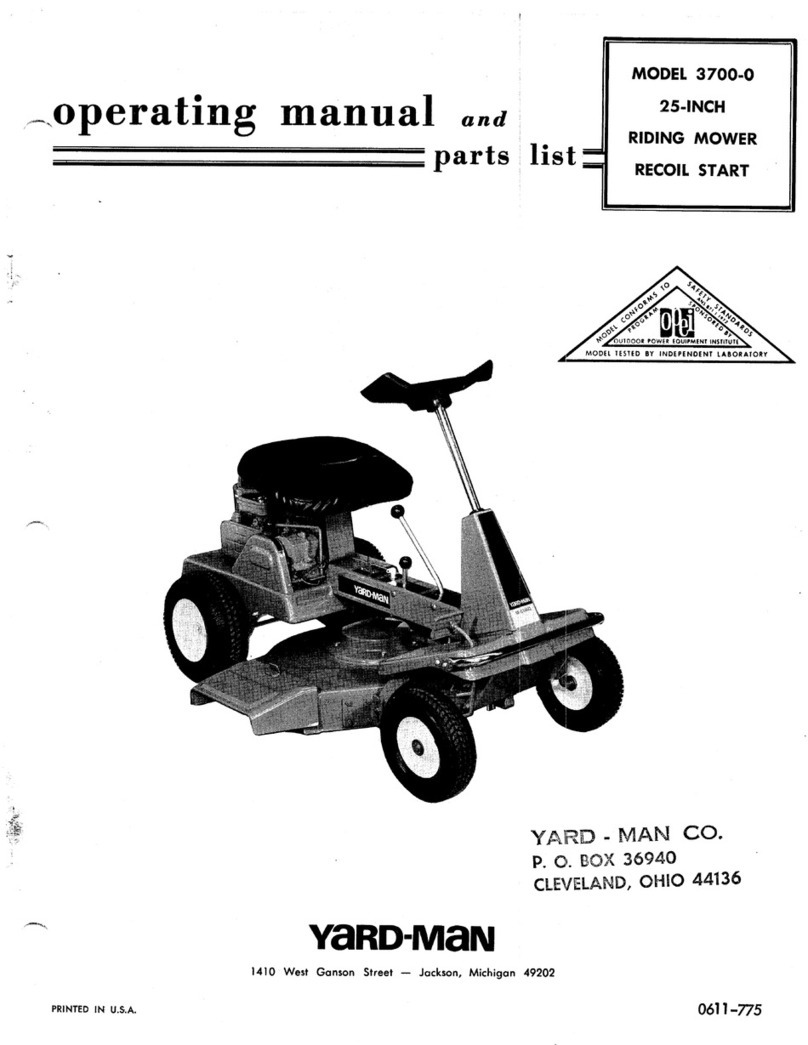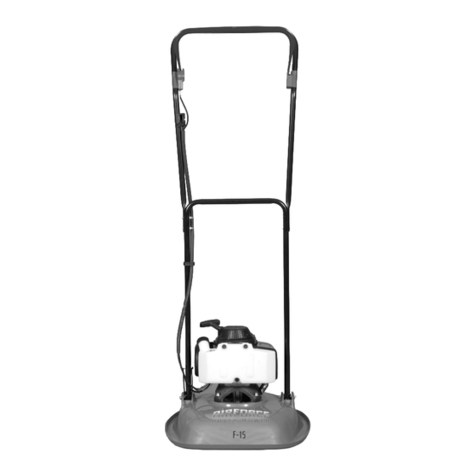
9
ASSEMBLY
8. Insert the shoulder screw into the chosen index hole on the front gauge
wheel bracket.
NOTE: On the left side and right side deck gauge
wheels, the shoulder screw must be installed
from the outside of the tractor inward, through
the square hole on the bracket. On center deck
gauge wheels (if equipped) the shoulder screw
side of the assembly can be installed from either
direction. See Figure 16.
9. Secure with the lock nut
previously removed.
Battery Information
WARNING
CALIFORNIA PROPOSITION 65 WARNING: Battery posts, terminals, and
related accessories contain lead and lead compounds, chemicals known to
the State of California to cause cancer and reproductive harm. Wash hands
after handling.
WARNING
Should battery acid accidentally splatter into the eyes or onto the skin,
rinse the affected area immediately with clean cold water. Seek prompt
medical attention.
If acid spills on clothing, first dilute it with clean water, then neutralize
with a solution of ammonia/water or baking soda/water.
NEVER connect (or disconnect) battery charger clips to the battery while
the charger is turned on, as it can cause sparks.
Keep all sources of ignition (cigarettes, matches, lighters) away from the
battery. The gas generated during charging can be combustible.
As a further precaution, only charge the battery in a well ventilated area.
Always shield eyes and protect skin and clothing when working
near batteries.
Batteries contain sulfuric acid and may emit explosive gases. Use extreme
caution when handling batteries. Keep batteries out of the reach
of children.
CAUTION
When attaching battery cables, always connect the POSITIVE (Red) wire to
the terminal first, followed by the NEGATIVE (Black) wire.
NOTE: The positive battery terminal is marked Pos. (+). The negative battery
terminal is marked Neg. (–).
Connecting Battery Cables
WARNING
Always connect the positive lead to the battery before connecting the
negative lead. This will prevent sparking or possible injury from an
electrical short caused by contacting the tractor body with tools being
used to connect the cables.
For shipping reasons the factory may leave both battery cables disconnected from
the terminals. To connect the battery cables, proceed as follows:
1. If present, remove the plastic cover from the positive battery terminal.
Attach the red connector to the positive battery terminal (+) using the bolt
(a) and hex nut (b). See Figure 17.
Outer bracket
Inner bracket
Figure 16
(b)
(b)
(a)
(a) (c)
Figure 17
2. If present, remove
the plastic cover
from the negative
battery terminal
and attach the black
cable to the negative
battery terminal
(–) with the bolt (a)
and hex nut (b). See
Figure 17.
3. Position the red
rubber boot (c) over
the positive battery
terminal (+) to help
protect it from corrosion. See Figure 17.
NOTE: If the battery is put into service after date shown on top/side of battery,
charge the battery as instructed in the Service and Maintenance section, prior
to operating.
Battery Maintenance
• The battery is filled with battery acid and then sealed at the factory.
However, even a “maintenance free” battery requires some maintenance to
ensure its proper life cycle.
• Spray the terminals and exposed wire with a battery terminal sealer, or
coat the terminals with a thin coat of grease or petroleum jelly, to protect
against corrosion.
• Always keep the battery cables and terminals clean and free of corrosion.
• Avoid tipping. Even a sealed battery will leak electrolyte when tipped.
Battery Storage
• When storing the tractor for extended periods, disconnect the negative
battery cable. It is not necessary to remove the battery.
• All batteries discharge during storage. Keep the exterior of the battery clean,
especially the top. A dirty battery will discharge more rapidly.
• The battery must be stored with a full charge. A discharged battery can
freeze sooner than a charged battery. A fully charged battery will store
longer in cold temperatures than hot.
• Recharge the battery before returning to service. Although the tractor may
start, the engine charging system may not fully recharge the battery.
Battery Removal
WARNING
Battery posts, terminals, and related accessories contain lead and lead
compounds. Wash hands after handling.
The battery is located beneath the seat
frame. To remove the battery:
1. Remove the hex washer screw (a)
securing the battery hold-down
bracket (b) to the frame. Then flip
the battery hold-down bracket (b)
up to free the battery. See Figure 18.
2. Remove the hex cap screw and sems
nut securing the black negative
battery lead to the negative
battery post (marked NEG). Move
the cable away from the negative
battery post.
Figure 18
